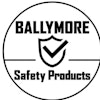Any organization that handles a large volume of invoices and touches a large quantity of products can benefit from the visibility and efficiency gained from achieving a fully automated AP/AR process.
Distributors must continually manage a vast global ecosystem of suppliers, partners, and customers. This reality requires them to be nimble and efficient in order to handle their stakeholders’ vastly different accounting and transactional needs. Distributors’ suppliers and partners are also often at very different levels of automation within their accounts payable (AP) and accounts receivable (AR) processes.
Any organization that handles a large volume of invoices and touches a large quantity of products can benefit from the visibility and efficiency gained from achieving a fully automated AP/AR process. In a fast-paced environment that requires precision, accuracy, and efficiency, distributors employing the right back-office AP and AR automation technology, supporting the right AP and AR processes are best equipped to deliver better front-office service to suppliers and customers.
Evaluating the Accounting Process
To make sure back-office accounting automation technology can support front office service to the distributor’s suppliers and customers, it is important to closely evaluate the accounting process and identify inefficiencies. The process begins by asking specific questions of both yours and your suppliers’ accounting departments.
Identify potential bottlenecks by evaluating how long it takes to process a single invoice, and whether those invoices are paper-based or electronic. Is your organization capitalizing on early-payment incentives or getting saddled with late-payment fees? The answer enables the accounting department to assign proper invoice-payment priority. Also assess the additional costs your accounting process is generating, including money spent on postage, courier services, and more in processing an invoice.
Also take steps to empower your suppliers to become active participants in your accounting process. It is this empowerment that maximizes the potential for AP and AR automation to make a real impact for both distributors and their suppliers. First, compare the number of calls placed to and from suppliers and customers to the number of transactions actually processed. Multiple calls regarding a single invoice signals barriers to efficiency. Assessing how efficiently your suppliers are generating invoices, fulfilling orders, and ensuring timely shipments can help identify repeated breakdowns in the process, which can increase costs. Finally, evaluate your suppliers’ accuracy by comparing your orders with their invoices. Working with suppliers that are highly accurate reduces time-consuming corrections for the distributor.
Suppliers and customers stand to benefit from AP and AR process efficiency as they will see their transactions processed – and their needs satisfied – more quickly and comprehensively, which fosters stronger “front-office” business relationships and cultivates long-term success.
Implementing the Right Accounting Automation Technology
With AP and AR processes aligned to the distributor’s operations, invoice capture, document management, and workflow automation technology is available to help organizations introduce visibility and establish workflow rules that conditionally automate accounting processes, helping to identify and resolve paper- and process-based breakdowns. A streamlined accounting process allows distributors to spend more time and resources on projects that provide business value, while also placing priority on addressing customers’ needs.
Migrating from a paper-based process to a computerized one is only part of the accounting solution. True automation results when accounting systems are integrated with ERP solutions. This integration delivers built-in intelligence across the customer and supplier landscape so that, after the very first time information is entered at any point, the data will never have to be rekeyed. Despite the growing presence of ERP solutions within distributors’ accounting processes, Metafile has found that relatively few are employing paperless workflow automation with ERP technology integration in its entirety. In fact, prioritizing this “Paperless ERP” presents a distinct opportunity to maximize the ERP investment, increase ROI, and promote seamless efficiency throughout the organization.
Why Accounting Automation Technology Really Matters
By spending less time handling internal AP and AR process issues, an organization is better armed to speedily and comprehensively serve customers and manage supplier relationships. This makes AP and AR automation technology an important tool in fostering stronger, more reliable and more profitable front-office relationships with suppliers and customers.
Jim Mandt is VP of technical services for Metafile Information Systems, Inc., an independent provider of paperless document management applications. For more information, visit www.metaviewer.com.






















